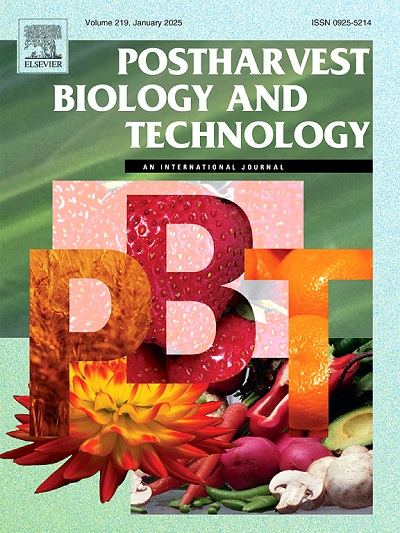Methyl jasmonate-induced postharvest disease resistance in Agaricus bisporus is synergistically regulated by AbbZIP2 and AbMYB11 to facilitate ROS balance
IF 6.4
1区 农林科学
Q1 AGRONOMY
引用次数: 0
Abstract
Brown blotch disease caused by Pseudomonas tolaasii, poses a significant threat to the postharvest storage of edible mushrooms. This disease leads to rapid browning in Agaricus bisporus, significantly shortening its shelf life. The defense mechanisms of mushrooms against the pathogen during the postharvest stage remain unknown. Here, we reported that the ascorbate-glutathione (AsA-GSH) cycle played a critical role in the methyl jasmonate (MeJA)-induced postharvest disease resistance in A. bisporus. Importantly, we identified and characterized an A. bisporus basic leucine zipper (bZIP) transcription factor (AbbZIP2) that was involved in MeJA-induced disease resistance by directly repressing the transcription of AsA-GSH cycle-related genes. Furthermore, we demonstrated that AbbZIP2 interacted with a 3R-MYB TF (AbMYB11), which independently activated the AsA-GSH cycle-related genes and attenuated the transcriptional repression of AbbZIP2 on AsA-GSH cycle-related genes. Additionally, AbbZIP2 and AbMYB11 transcriptionally regulated with each other. Our findings revealed a novel AbbZIP2- and AbMYB11-mediated regulatory network involved in the AsA-GSH cycle to maintain the balance of reactive oxygen species and collectively contribute to disease resistance in A. bisporus during postharvest storage. This study provided important theoretical insights for extending shelf life and reducing postharvest losses.
茉莉酸甲酯诱导的双孢蘑菇采后抗病性受AbbZIP2和AbMYB11协同调节,促进ROS平衡
由陶氏假单胞菌引起的褐斑病对食用菌采后贮藏造成重大威胁。这种疾病导致双孢蘑菇迅速褐变,显著缩短其保质期。蘑菇在采后阶段对病原菌的防御机制尚不清楚。在这里,我们报道了抗坏血酸-谷胱甘肽(AsA-GSH)循环在茉莉酸甲酯(MeJA)诱导的双孢酵母采后抗病中起关键作用。重要的是,我们鉴定并鉴定了一种双孢酵母碱性亮氨酸拉链(bZIP)转录因子(AbbZIP2),该因子通过直接抑制AsA-GSH周期相关基因的转录参与meja诱导的抗病性。此外,我们证明了AbbZIP2与3R-MYB TF (AbMYB11)相互作用,其独立激活AsA-GSH周期相关基因,并减弱了AbbZIP2对AsA-GSH周期相关基因的转录抑制。此外,AbbZIP2和AbMYB11相互进行转录调控。我们的研究结果揭示了一个新的AbbZIP2-和abmyb11介导的调控网络,参与AsA-GSH循环,以维持活性氧的平衡,并共同促进双孢酵母在采后储存期间的抗病性。该研究为延长贮藏期和减少采后损失提供了重要的理论见解。
本文章由计算机程序翻译,如有差异,请以英文原文为准。
求助全文
约1分钟内获得全文
求助全文
来源期刊

Postharvest Biology and Technology
农林科学-农艺学
CiteScore
12.00
自引率
11.40%
发文量
309
审稿时长
38 days
期刊介绍:
The journal is devoted exclusively to the publication of original papers, review articles and frontiers articles on biological and technological postharvest research. This includes the areas of postharvest storage, treatments and underpinning mechanisms, quality evaluation, packaging, handling and distribution of fresh horticultural crops including fruit, vegetables, flowers and nuts, but excluding grains, seeds and forages.
Papers reporting novel insights from fundamental and interdisciplinary research will be particularly encouraged. These disciplines include systems biology, bioinformatics, entomology, plant physiology, plant pathology, (bio)chemistry, engineering, modelling, and technologies for nondestructive testing.
Manuscripts on fresh food crops that will be further processed after postharvest storage, or on food processes beyond refrigeration, packaging and minimal processing will not be considered.
 求助内容:
求助内容: 应助结果提醒方式:
应助结果提醒方式:


